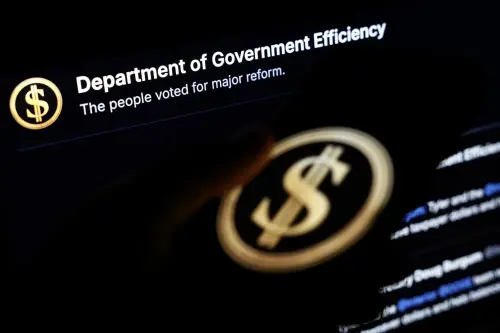Only a whole-of-society approach—one that engages government, private companies and civil society alike—can effectively combat and build resilience to disinformation, write Alina Polyakova and Geysha Gonzalez. This piece was originally published on August 4 by the Washington Post.
Russia plans to disrupt the midterm elections in November. That, at least, was the surprisingly frank conclusion announced by several Trump administration officials in a joint news conference on Thursday. FBI Director Christopher A. Wray described what he called ongoing “information warfare” on social media. He and other members of the national security team assured the American public that they would do everything they could to protect the elections and counter Russian disinformation. Yet the briefing revealed little in the way of detail.
As U.S. officials attempt to formulate an effective response to Kremlin mischief-making, there’s one precedent that might be worth considering: the U.S. government’s anti-smoking campaign.
The effort to reduce smoking in the United States began in 1964, when the government acknowledged for the first time that smoking is harmful to health. By 2015, the United States had managed to cut the smoking rate by more than half. When the campaign began, doctors were still telling pregnant women that it was safe for them to smoke. Fifty years later, smoking has been banned in many public spaces.
What made this campaign so successful? First, the government used its regulatory powers. Much like Big Tobacco in the 1950s, the tech industry today operates in an unregulated environment. Facebook, Twitter and Google are all keen to avoid being treated as media companies, which would make them subject to a slew of Federal Communications Commission regulations.
So far, when left to their own devices, the companies have made only superficial changes to their platforms at the behest of new European regulation around user data privacy. These voluntary efforts are failing to curtail the spread of disinformation, and sooner or later the tech industry will have to face the same FCC restrictions on content and advertising as traditional media—which would undoubtedly help to reduce the spread of erroneous reporting.
Second, the messenger matters. The Office of the U.S. Surgeon General, which published a 1964 report linking smoking to cancer, was a trusted government agency. Research shows that even truthful information will be dismissed by audiences if it doesn’t come from a trusted source. False information reaches people six times faster and is 70 percent more likely to be shared than a truthful story.
Responsibility for warning the public about disinformation threats should fall to the Department of Homeland Security (DHS) and the Federal Emergency Management Agency (FEMA), which are responsible for providing accurate information during crises. DHS chief Kirstjen Nielsen, who participated in this week’s briefing, has described Russian interference in the U.S. elections as “a Category 5 hurricane” and announced the creation of a National Risk Management Center. As a first order of business, this new task force should assess how the agency can deploy its existing emergency response capabilities to counter disinformation, work with local officials and establish appropriate responses to attacks.
Third, even though the U.S. government led the campaign to curtail smoking, it also sought help from the private sector. Civil society groups such as the Heart Association produced advertising for television, radio and newspapers describing the harmful effects of smoking, and the American Nonsmokers’ Rights Foundation fought to ban smoking in public places.
Today, civil society groups such as StopFake and EU DisinfoLab are developing innovative techniques for exposing disinformation, but these efforts are nascent and strapped for resources. The State Department’s Global Engagement Center, which is the only U.S. government entity with a mandate to counter disinformation, should fund useful independent initiatives. Private foundations and tech companies should also devote significant funding to research and development in this sector, as some have already begun to do.
Fourth, the Education Department should work closely with states to reinvigorate civics education for the digital age. Just as we teach children about the health risks associated with smoking, we should also educate them to become critical consumers of information.
Finally, there is one important way in which the anti-smoking campaign differs from counter-disinformation efforts. In the case of smoking, American corporations were selling cigarettes to turn a profit. Today, however, foreign actors are deploying misleading content to actively undermine our democracy. For this reason, the FBI and other U.S. intelligence agencies should work closely with DHS, the State Department, the Director of National Intelligence, and social media companies to develop a rapid response plan whenever suspicious activity is detected.
Only a whole-of-society approach—one that engages government, private companies and civil society alike—can effectively combat and build resilience to disinformation. Ahead of the midterm elections, Congress should hold Trump administration officials accountable to the promises they made to the American people this week.
The Brookings Institution is committed to quality, independence, and impact.
We are supported by a diverse array of funders. In line with our values and policies, each Brookings publication represents the sole views of its author(s).







Commentary
Why the U.S. anti-smoking campaign is a great model for fighting disinformation
August 7, 2018